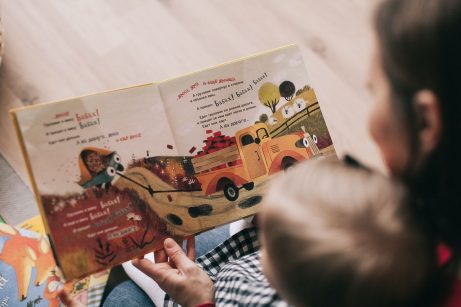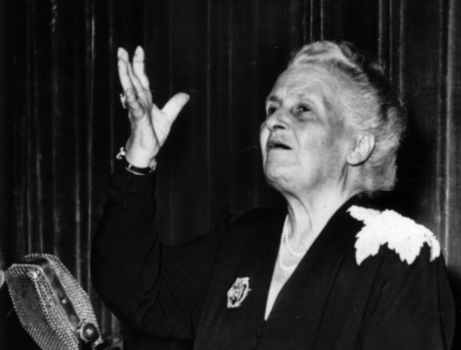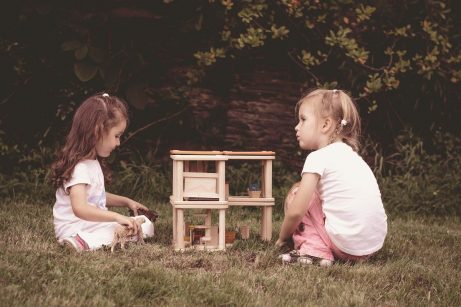Toilet Training the Montessori Way
When and how to toilet train is a constant – and at times, contentious – debate among parents and families. Whilst I cannot promise the “correct” answer, below are the considerations and guidelines from a Montessori perspective.
So What Are We Talking About
Toilet training – the act of teaching a young child to intentionally eliminate into the toilet or potty – vary vastly across cultures and time. Nowadays, some families practice baby-led toileting or “elimination communication” to avoid diapers completely; others wait to begin toilet training until three years old or older.
Similarly varied is the attitude parents and caregivers take to toilet training. Trepidation, excitement and frustration are the most commonly cited emotions. Many people incentivize toilet training with celebration and rewards; others use negative motivation in the form of punishment or various consequences.
Unsurprisingly, Montessori educators usually caution against either of those approaches. As in so many other areas, we strive to prepare an environment that allows the child to understand, practice and learn. We treat the child with respect, assist when needed and leave them to do the work when they are ready to.

Shift from frustration and challenges to opportunities for growth and confidence in your child’s toilet learning journey thanks to our Parent’s Roadmap to Toilet Learning the Montessori way.
The process of elimination is normal and natural. It should not be regarded as shameful or dirty; however, neither does it need to be celebrated other than as a sign of the body’s healthy functioning. It is all too easy to attach hang-ups, develop neuroses and psychosomatic problems to this vital bodily function, and just as unnecessary! So our first recommendation is: relax, and rely on your child. They’ve got this.
The Physical Considerations
In order to voluntarily control elimination, the child needs to pass two milestones in relation to their body: the awareness of the process and the physical control over the bladder and rectal sphincters.
The neurological pathways leading to the sphincters are not mature enough at birth (they have not been myelinated and as such cannot send a reliable signal). A good rule of thumb to recognize a child will have the physical ability to control the sphincters is when they are able to crawl (with the belly and bottom fully off the floor) and sitting is stable. At this same age, the bladder is also grown enough for the child to be able to “hold” a reasonable amount of urine and so it becomes practical to eliminate into the potty.
You can start toilet training in earnest at any point after this. Sooner is better, we believe – younger children tend to have more interest, motivation and early success, whilst older toddlers become “set in their ways” and may resent having to attend to toileting over other play or socializing.
The Psychological Considerations
The next step is the mental work: for the child to associate the biological signals of needing to eliminate with the desire to stay dry or clean, so as to be able to decide to take the appropriate action – to go to the potty, whether independently or by asking an adult for help.
It is the child who must learn to find the soiled diaper or underwear undesirable. This is an important thing to remember and respect: don’t forget that they have for long months eliminated into their diapers without worry or consequence.
Trying to encourage a child to use the toilet by external motivation (compliments, appeals to their cleverness or “being a good boy or girl”, rewards or threats) is a double-edged sword, and it usually cuts the child, often causing regression in times of emotional upset. Being toilet trained has its own benefits that a child needs to want for themselves, among them a desire for independence and to “be like mommy and daddy”.
Preparation for Toilet Training
Assisting a child in developing bodily awareness of elimination is a process that starts long before we ever seat a child on the potty, and its main component is communication. When changing diapers, when bathing a child, when noticing them having a bowel movement… all of these are opportunities for the parents to describe their body and its functions, and explain it to their child.
This is a good habit to build from birth on – after all, we never know how much a young baby can understand, but we do know they are always listening and paying attention. You can say things like, “your diaper is very wet! You peed a lot just now” or “I can see you’re pooping right now. We will go and wash you up when you’re finished”. It might feel silly at first but this ongoing conversation with your child is actually hugely developmentally beneficial in multiple ways, and is one of the best, most valuable gifts you can give them in infancy.
Another big aid in helping babies understand what is going on is to allow them some time without a diaper whenever possible, and to use cloth diapers over disposable ones. Besides all of the other advantages of cloth diapers (especially health, economical and ecological), it is because technological progress has given us a disposable diaper that feels dry at all times. Even immediately after a child wets it. Whilst it undoubtedly helps their comfort, it takes away all physical feedback – sure, they knew something just happened in the lower part of their body, but the feeling disappeared almost straight away. Imagine learning to dance in steel-capped boots – you would never know if your partner stepped on your feet, or you on theirs – there is no sensation either way!
Next, set the stage! It would be great if your toilet were safe and appropriate for young children to use, most families don’t have that luxury, and use the potty instead. We recommend you get a stable and comfortable one that does not fall over easily; a front “guard” is especially useful for boys, and ease of cleaning is a major factor. Please avoid toilets that light up, make noises, or provide any other entertainment “bells and whistles” – these are only an unnecessary distraction and do not help your child any.
We also recommend parents place the potty in the bathroom if at all possible, and failing that just having one in the child’s bedroom. Whilst it might be tempting to put one in the living room, bedroom, kitchen, and everywhere else for easy access, again this is a distraction that confuses the child and distracts from the purposes of toilet training – which is to learn to eliminate, when needed, in the appropriate place.
Unrolling the toilet paper is sometimes a very popular activity that frustrates parents to no end. If this proves to be an issue, we recommend providing baskets of pre-torn toilet paper or different dispensers for a short period.
Finally, dress for success! Dress the child in things that can come off quickly and easily and that the child can pull down themselves: sweat pants and t-shirts are so much easier than tights, dresses, overalls, onesies and such. Underwear is recommended for both hygienic and psychological reasons: it offers more feedback in the case of an accident and also natural motivation for children who see it as something “special” for them. Training underwear, which does feel wet but is thicker or has inserts to prevent puddles and completely wet clothing, can be very helpful.
Ready, Set, Go! The Practical Outline
So how to toilet train?
We start with introducing the potty and having the child sit on it during diaper changes. This is simply to link the potty with toileting and having it become a normal part of their routine. If “something happens” when the child is seated, they usually become very excited and interested; simply point out that they urinated and move on.
After a few days or weeks with the potty, it’s time to introduce underwear. Point out to the child that they don’t have a diaper on, and periodically take them to the potty (it’s helpful to announce that it’s time to go rather than asking, “do you need to go?”). If they have an accident, simply point that out to them as well and take them to attend to it.
During this time we recommend keeping dry bottoms for a change of clothing in the bathroom. When changing wet clothing, always sit the child on the potty – even if you know “the damage is done” and they will not urinate again. You are looking to build a connection between the bathroom and urination, that’s all.
Have your child be a part of the process – dressing or undressing themselves (or helping you do it), taking their wet clothes to the hamper or washer, bringing you a spray and wipe to clean up the puddles and so on. This is all the “consequence” an accident should have: interrupting play to sit on the potty, change and clean up, in this order.
Avoid criticizing or chastising the child for accidents; instead, aim for prevention – if your child always wets their pants fifteen minutes after a meal, take them to the potty five minutes before that! It might be helpful to keep a chart marking urination, bowel movements and accidents for the first few days or weeks to see the patterns.
This is a time-consuming process and labour intensive for parents, at least in the beginning. However, if you’re consistent, it usually takes a few weeks at most: think of it as a major investment of time that will pay for itself many, many times over.
A Note on Night-Time Dryness
Developing the ability to stay dry at night usually comes much later than daytime toileting success. During the long sleeping period, the adult brain slows down the production of urine and “locks in” the sphincters; children reach this point of physiological maturity at different ages, on average between three and six years old, and until then, there is nothing they can do to influence night time urination. Some parents choose to wake their child to use the potty throughout the night whilst others continue to use night-time diapers; there seems to be little developmental evidence to either promote or discourage the practice, so it is left to personal preference.
If a child has been dry at night for a consistent period of weeks or months and accidents return, it may be a sign of a health issue (such as urinary infections), illness, psychological stress or trauma. We would recommend discussing with the child’s pediatrician. In either case the accidents should be met with a matter-of-fact, understanding approach and parents should avoid, under any circumstances, blaming or shaming the child for them.


